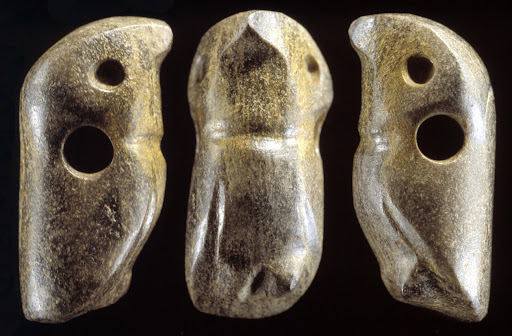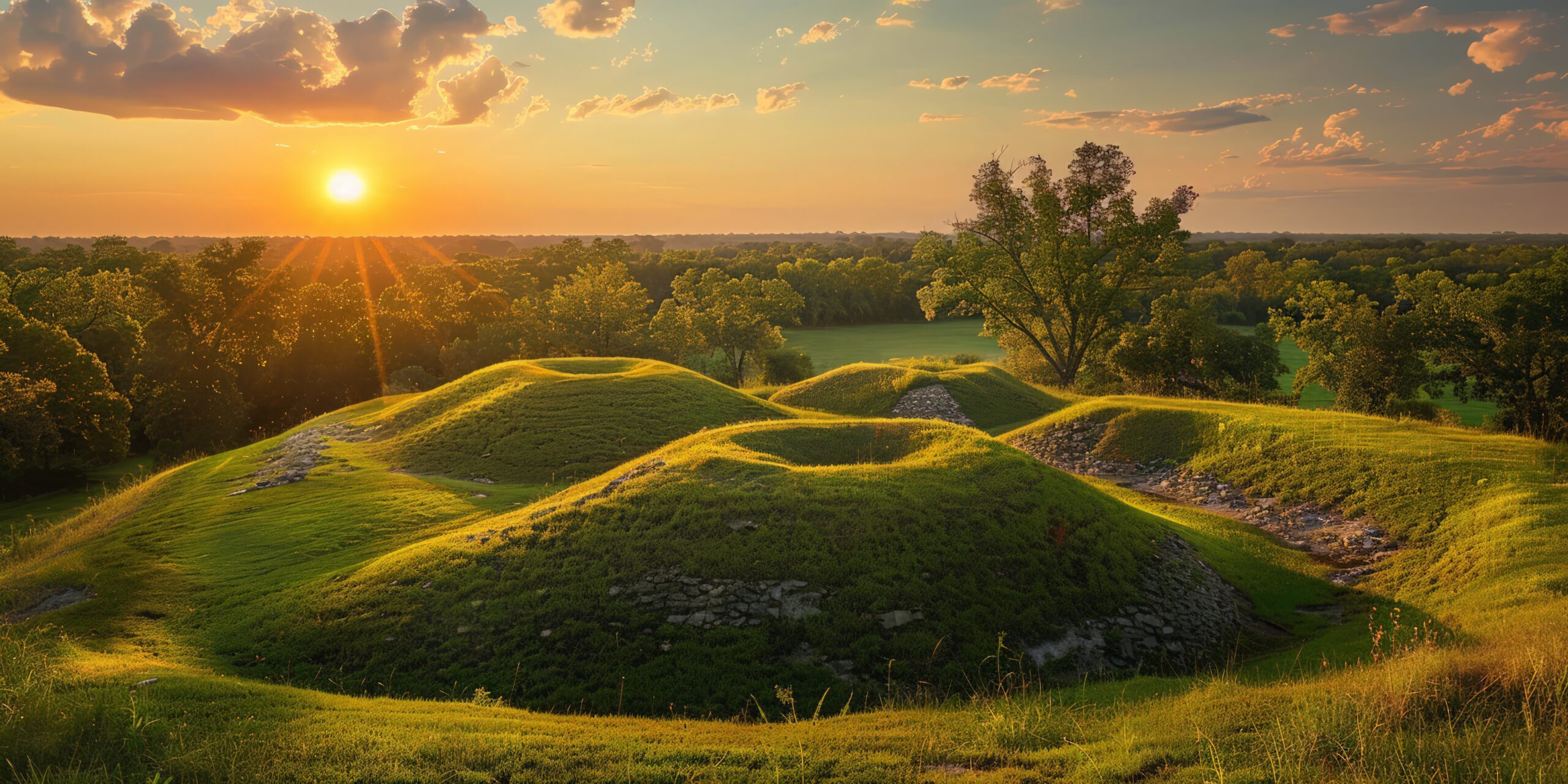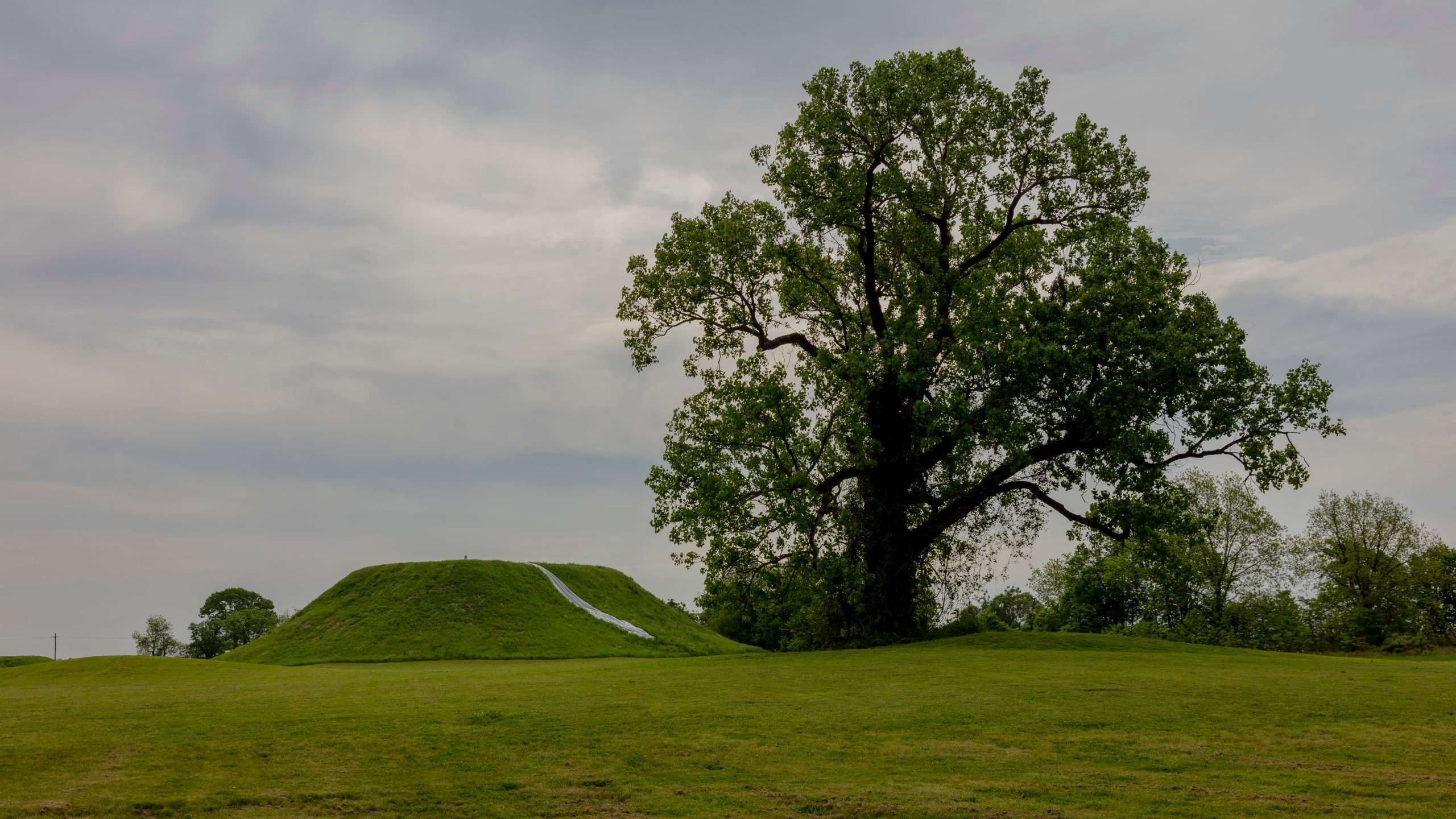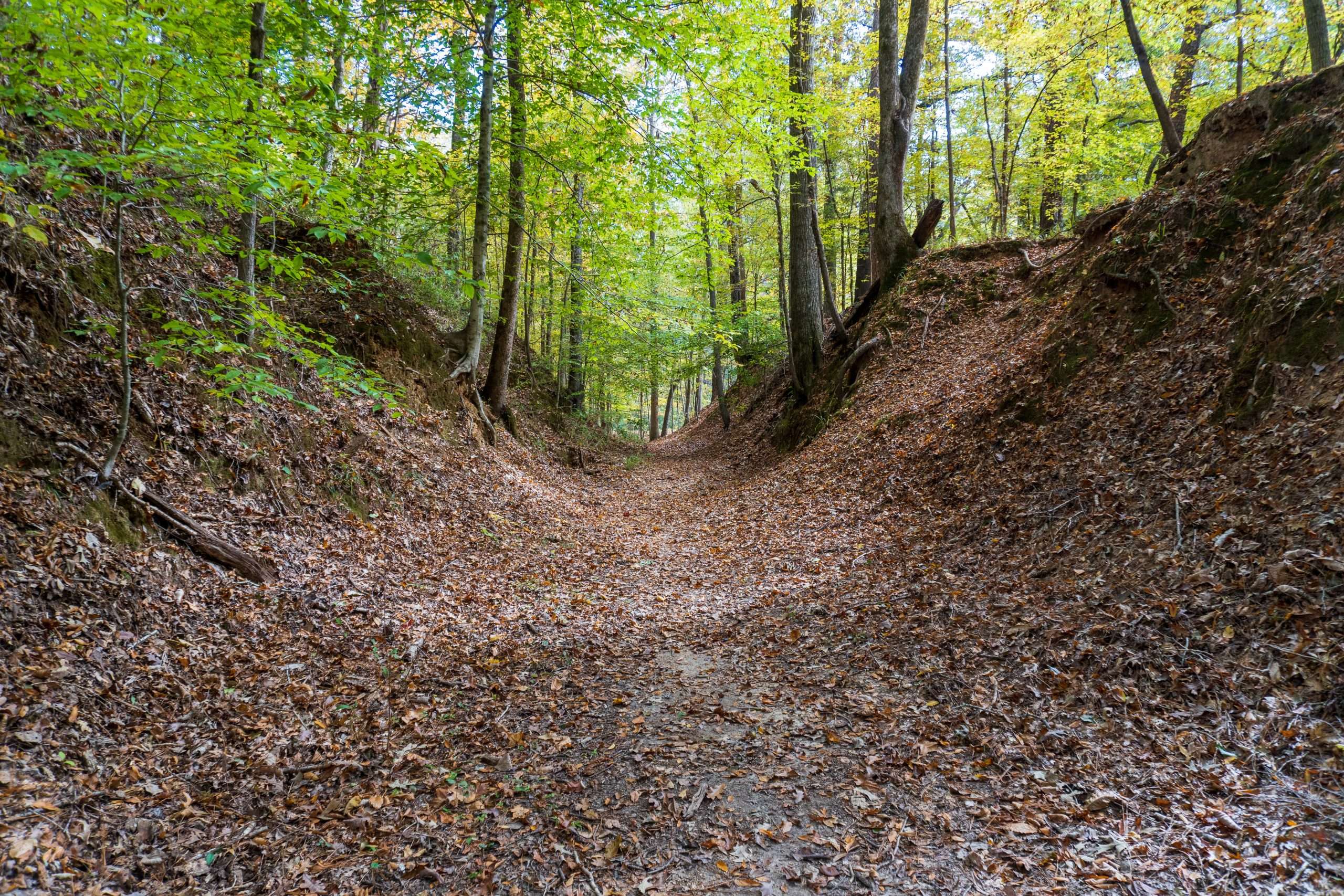Imagine Hernando de Soto rolling down the Natchez Trace Parkway in a pickup truck, sunglasses on, GPS locked on “Mississippi River,” and a cooler of barbecue in the back—searching for gold and the perfect tailgate spot. While we know De Soto wasn’t cruising in anything quite as comfy as a truck (try horses and armor instead), his 16th-century expedition through what is now modern Mississippi feels oddly relatable. Just like today’s Mississippians, De Soto was drawn to the beauty, resources, and intrigue of the region. Though instead of hunting for catfish or football victories, De Soto was after gold and glory. Spoiler alert: he didn’t find either, but his exploration of Mississippi sure left a mark.
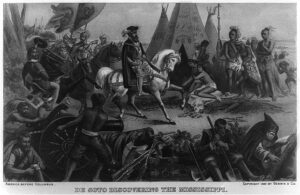
Hernando de Soto’s exploration of the southeastern United States between 1539 and 1542 was one of the most significant expeditions in early American history. It had a profound and lasting impact on the region, including present-day Mississippi, where his journey came to a pivotal moment with his sighting of the Mississippi River in 1541. His expedition, which sought to discover riches and expand Spain’s influence, brought European culture, religion, and violence to Native American societies, marking the beginning of profound changes that would reshape the indigenous world.
Preparation and Resources for Exploration
De Soto’s journey was meticulously planned, requiring vast amounts of supplies, manpower, and diverse resources. His force of around 600 men included soldiers, explorers, and enslaved Africans, and was heavily armed with swords, crossbows, and the newly introduced firearms. The inclusion of these weapons highlights the dual purpose of the expedition—both exploration and conquest. The presence of horses, a rare and formidable sight to the Native Americans, bolstered the Spaniards’ mobility and reinforced their perceived superiority.
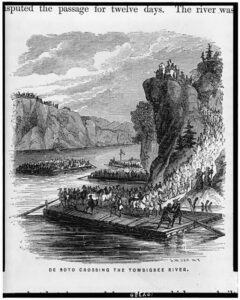
Among the supplies, livestock such as pigs were a critical food source. De Soto’s introduction of pigs into the region had an unintended consequence—establishing the foundations for feral hog populations in the Americas, which still exist today (Texas A&M). The inclusion of religious items underscored Spain’s commitment to spreading Christianity as part of its colonial agenda, aiming to convert Native populations. Furthermore, trade goods like beads and metal tools were meant to foster alliances with Native tribes, though they often proved insufficient to prevent conflict.
The Travel Route: Encountering Native Peoples
De Soto’s expedition carved a path through the southeastern United States, from Florida to South Carolina, and from Tennessee through Alabama into Mississippi. On May 8, 1541, the group became the first Europeans to document seeing the Mississippi River. The sighting of the great river was a momentous occasion, not just for geographical discovery but for the significance it held as a gateway to the interior of the continent.
De Soto’s path was marked by frequent interactions with Native American tribes, from the Timucua in Florida to the powerful Mississippian cultures found in what is now Georgia, Alabama, and Mississippi. These tribes had complex social structures and vast networks of trade, yet their first interactions with the Europeans were shaped by curiosity that quickly turned to mistrust. The Spanish insistence on demanding food, gold, and tribute led to violence, which became a tragic hallmark of their journey.
Conflict and Cooperation with Native Americans
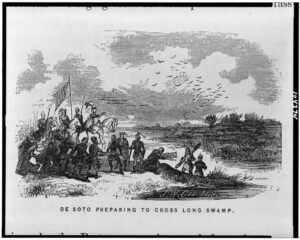
Documentary sources provide insight into these often fraught interactions. Chroniclers such as Gonzalo Fernández de Oviedo and Alvar Núñez Cabeza de Vaca wrote extensively about the expedition’s encounters with indigenous peoples. Oviedo’s accounts highlight the intrigue and wariness of Native Americans who were, at first, curious about the strangers arriving in their land. However, the demands for food, labor, and riches, as well as violent skirmishes, soon soured relations. For example, De Soto’s men, in their relentless quest for wealth, attacked a village suspected of hiding gold, resulting in bloodshed and driving a deep wedge between the Spaniards and the local populations.
Cabeza de Vaca’s writings also described moments of fragile cooperation, where barter and negotiations over provisions occurred between the Spanish and Native tribes. Despite these moments, the overall impact of De Soto’s tactics was one of fear and resistance, a continuation of strategy he used in Peru. His aggressive approach in attempting to subdue and exploit Native American societies foreshadowed the dynamics of colonization that would become more pervasive in the centuries to follow.
De Soto’s journey through what is now Mississippi was particularly significant due to the introduction of European diseases that devastated local populations. The spread of diseases such as smallpox, against which the indigenous populations had no immunity, caused long-term demographic collapse among tribes in the region, weakening their ability to resist future European encroachment.
The Mississippi River: Legacy and Transformation
The Mississippi River itself served as a pivotal geographical and symbolic marker of the expedition. De Soto’s sighting of the river not only marked a milestone in European exploration but also signified the boundary between the known and the unknown. His crossing into Arkansas and subsequent return to the Mississippi River underscored the challenges of navigating and controlling such vast, unfamiliar territories. De Soto’s death on May 21, 1542, on the banks of the Mississippi River, ended his ambition of further exploration. His followers attempted to continue but ultimately retraced their steps down the river and along the Gulf Coast in a desperate bid for survival.
The End of De Soto’s Expedition and Its Consequences

While De Soto’s expedition failed in its primary objective to discover large quantities of gold, its legacy was far-reaching. The most immediate effect on Mississippi and surrounding regions was the devastation of Native American societies due to conflict and disease. The introduction of European animals, crops, and goods permanently altered the ecosystem and economy of the region. Moreover, De Soto’s reports of his findings opened the door for future Spanish and, later, French and British explorations, all of which would eventually lead to colonization.
The End of De Soto’s Expedition and Its Consequences
While De Soto’s expedition failed in its primary objective to discover large quantities of gold, its legacy was far-reaching. The most immediate effect on Mississippi and surrounding regions was the devastation of Native American societies due to conflict and disease. The introduction of European animals, crops, and goods permanently altered the ecosystem and economy of the region. Moreover, De Soto’s reports of his findings opened the door for future Spanish and, later, French and British explorations, all of which would eventually lead to colonization.
The cultural exchange, though deeply one-sided and often violent, began a process of transformation for both Europeans and Native Americans in the region. The indigenous peoples of the Mississippi Valley, particularly those who were part of the powerful Mississippian chiefdoms, were forced to adapt to new realities shaped by European intrusion. The expedition of Hernando de Soto marked the beginning of this long, painful transformation that would culminate in the complete colonization of North America by European powers.
Hernando de Soto’s exploration left a lasting mark on Mississippi, shaping its early history through the forced interactions between European explorers and Native American tribes. His journey, though filled with ambition, cruelty, and suffering, set the stage for the dramatic shifts in power and culture that would follow in the wake of European colonization. As the first European to document the Mississippi River, De Soto’s legacy continues to be remembered as a turning point in the history of the American South, marking both the beginning of European exploration and the tragedy of the Native American story.
Read the previous article here:




